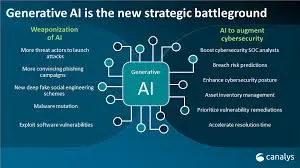
Generative AI
Generative AI is a type of artificial intelligence that can create new content, like text, images, music, audio, and videos, by learning from existing data and generating new, unique outputs.
Here's a more detailed explanation:
- What it is:Generative AI, also known as GenAI, is a subset of AI that uses generative models to produce new data instances.
- How it works:These models learn patterns and structures from vast datasets and then use that knowledge to generate new, original content.
- Examples of Generative AI:
- Text Generation: Tools like ChatGPT (powered by GPT models) can generate text, stories, articles, and more, based on user prompts.
- Image Generation: Models like DALL-E can create realistic or artistic images from text descriptions.
- Music Generation: AI can compose original music pieces based on various styles and parameters.
- Video Generation: AI can create videos, including animations and synthetic videos.
- Underlying Technology:Generative AI often relies on deep learning techniques, including:
- Generative Adversarial Networks (GANs): These involve two neural networks, a generator and a discriminator, that compete with each other to generate increasingly realistic outputs.
- Transformers: These are powerful models, like those used in GPT, that excel at processing sequential data, making them well-suited for text generation.
- Variational Autoencoders (VAEs): These models learn a compressed representation of the data and then use it to generate new data points.
- Applications:Generative AI has a wide range of potential applications, including:
- Content Creation: Generating marketing materials, articles, scripts, and more.
- Design and Art: Creating unique artworks, designs, and prototypes.
- Product Development: Generating new product ideas and designs.
- Scientific Research: Simulating complex phenomena and generating synthetic data.
- Education: Creating personalized learning materials and interactive experiences.
- Gaming: Generating dynamic game environments and characters.
- Examples of Generative AI tools:
- Adobe Photoshop: AI-powered photo editing.
- ElevenLabs: AI voice and audio generation.
- Suno: AI voice and audio generation for creative text-to-audio results.
- Beautiful.ai: AI presentation apps for design automation.
- Potential Issues:
- Bias: Generative AI models can reflect biases present in the data they are trained on.
- Copyright: Generated content may raise copyright issues if it mimics existing works.
- Misinformation: Generative AI can be used to create fake or misleading content.
| Md Yaseen Ahmed | |
| 17/03/2025 | |
| 1 |
